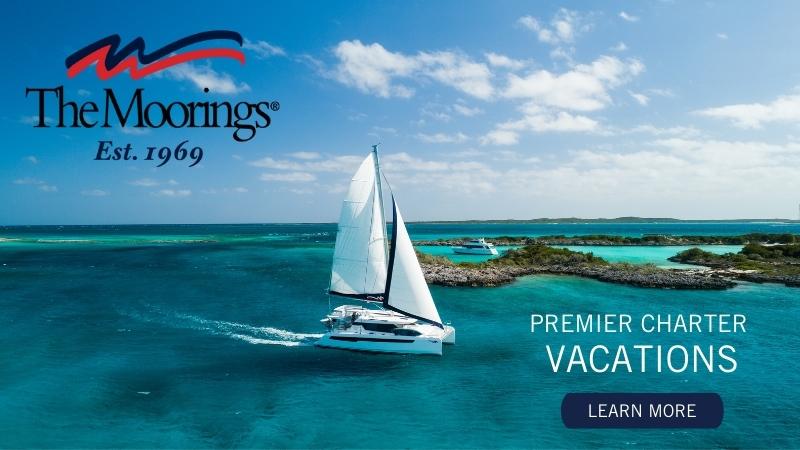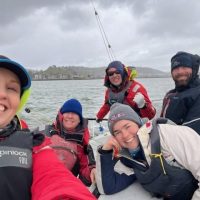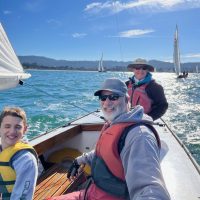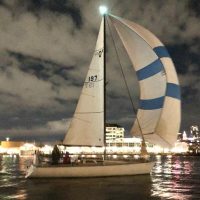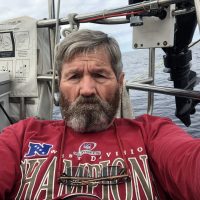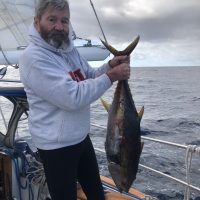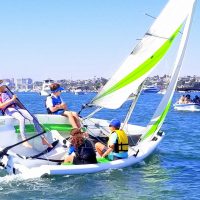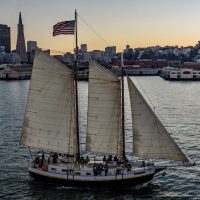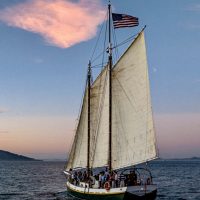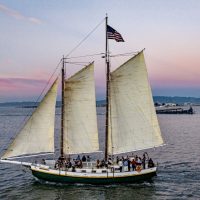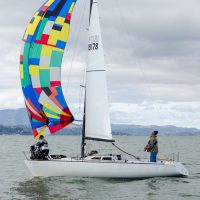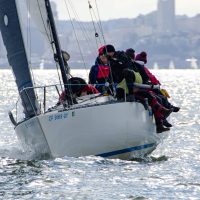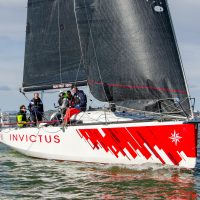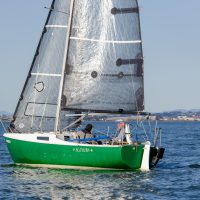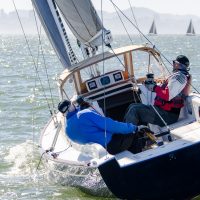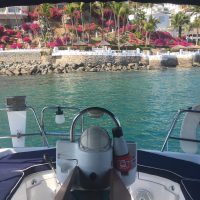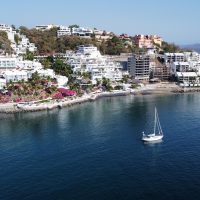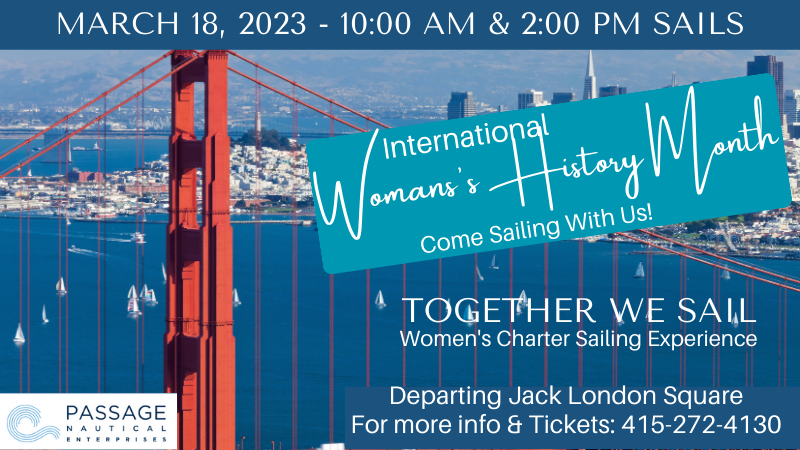
Forecast Foils Richmond Yacht Club’s Sail a Small Boat Day
Brandon Mercer wrote to let us know Richmond Yacht Club’s Sail a Small Boat Day, scheduled for tomorrow, is canceled. He wrote: “While you and I might be fine sailing in the rain, and 25-knot gusts, we’re not ready to put our guests through that Saturday, so Richmond Yacht Club is, unfortunately, canceling Sail a Small Boat Day for March 4th. We are eager to welcome sailors and the sailing-curious back November 4th, where we hope to be enjoying some warmer, dryer, and beautiful autumn weather.”
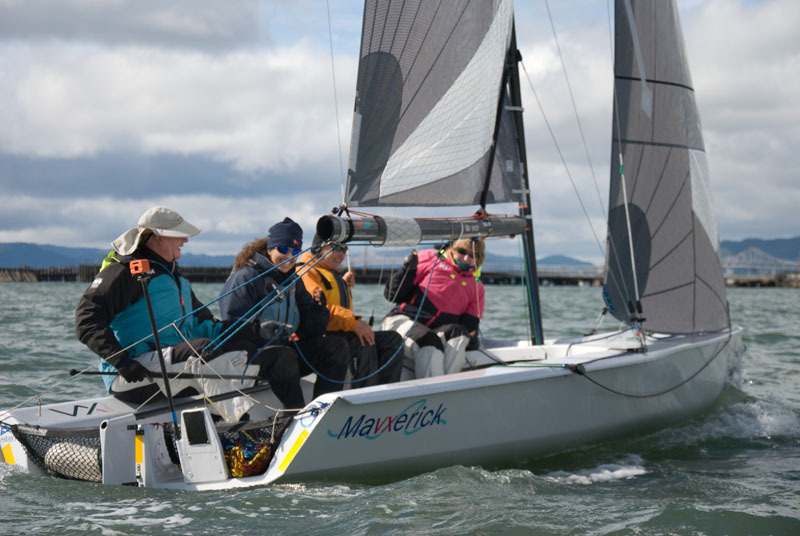
“Thank you for anything you can do to let folks know.”
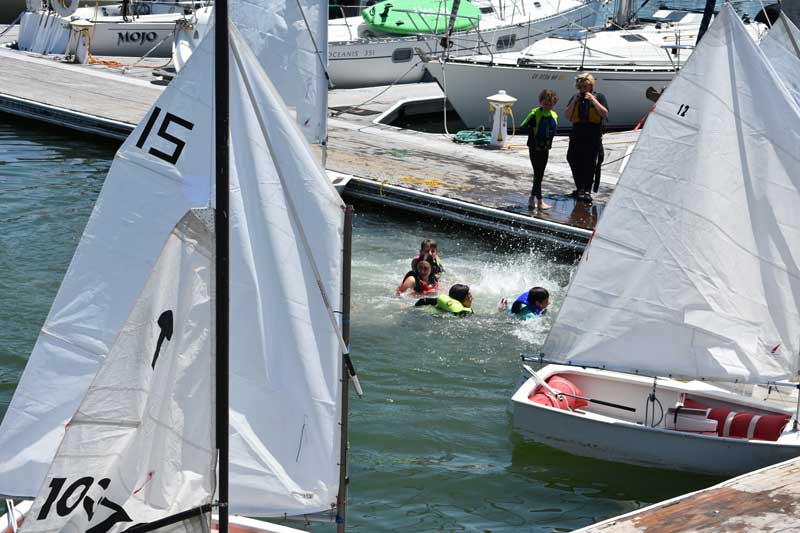
Despite the cancellation, we remind you there are dozens of youth sailing opportunities available in the Bay Area and up and down the coast. You can read about some in our current March issue here or visit the complete list on our website here.
Have You Ever Lost Your Dinghy?
What happens when two Bay Area sailors, who split their time between their home in Petaluma and their boat in Mexico, lose their dinghy and have to leave the boat before it is found? The story below caused us to wonder how many of us have woken up and realized, “We lost the dinghy!”?
Late last night, after rowing our 10-foot inflatable dinghy 200 yards through the surf and boisterous bay of Yelapa, Mexico, we finally arrived at Tally Ho, our moored Nauticat 43 sailboat. It was all I could do to stumble aboard with the rest of the inebriated crew, tie the dinghy to the rail, and say nite-nite. The following day — no dinghy.
“Someone stole the dinghy!” Chava quipped.
“Probably not,” I groaned, my head squeezed in a Raicilla hangover-induced vise.
“I’m sure it was the poor excuse of a knot I tied last night,” I added. We scoured the beautiful Yelapa, Mexico, bay, with binoculars yielding zero results.

The raucous crew of Tally Ho consists of Rich and Laura Brazil, Sal “Chava” Taormina, John “Jack Crevalle” McDill, and Christina “Kristy” McDill. Our eight-day sailing adventure from Puerto Vallarta, Mexico, would culminate in Barra de Navidad, 200 miles south.
We spread the word to everyone we encountered for the duration of the trip — Puerto Vallarta, Yelapa, Chamela, Tenacatita, and Barra de Navidad. We became “that boat” that lost its dinghy.
After arriving in Barra many days later, our good friends John Schulthess and Monique Boucher of the Lagoon 44 Baja Fog made it their mission to help us recover our runaway dinghy. They notified Dino, the Barra de Navidad harbormaster, and Isabel, his assistant. We, in the meantime, flew back to Petaluma, California, with our tails between our legs.

John, from Baja Fog, called me the following week with the great news of a dinghy recovery in the Sea of Cortez and excitedly asked me to help identify it. No luck, as it was a different make and model. Two weeks later, a fellow sailor/cruiser named Greg, whom we’d met in Tenacatita, called to say a missing dinghy had arrived in Las Hadas Marina, near Manzanillo, Mexico, courtesy of a local sport fisherman. Greg kindly gave me the contact email for Marco, the Las Hadas harbormaster. Could this be it? Las Hadas Resort? The site of our honeymoon and several other anniversaries?
I thanked Greg profusely, promised to buy him many beers, and emailed Marco, the Las Hadas harbormaster, and Dino, harbormaster from Barra. Several back-and-forth emails produced the appropriate proof that, indeed, it was our three-weeks-out-at-sea dinghy!
Marco then asked us to pick it up. Hmmm, small problem: We weren’t due to fly to Manzanillo for another month. Enter Pancho, our amazing friend from Barra who tends to Tally Ho and many other boats in the Barra Marina. Pancho offered to rent a truck, drive one hour to Las Hadas, load the dinghy, and return it to Barra.I granted permission to Dino and Isabel from Barra de Navidad and Marco from Las Hadas, giving Pancho authority to retrieve the wayward craft. Pancho arranged his arrival to coincide with the fisherman being on hand to receive a tip for his help. Are you following me so far?
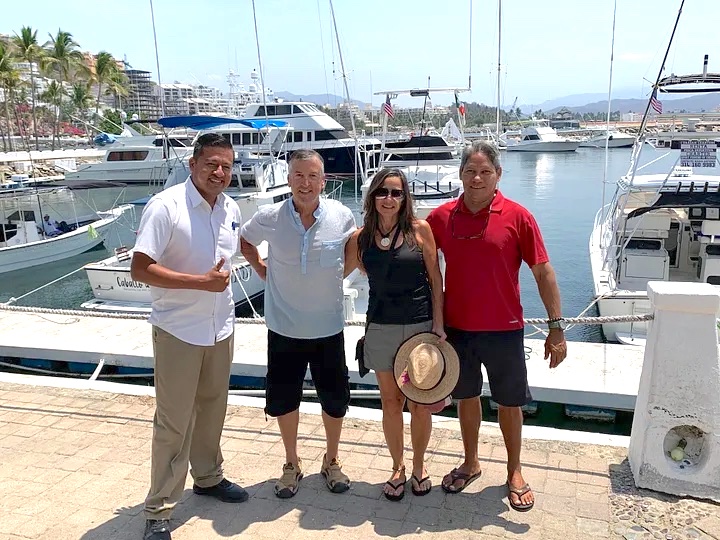
Pancho arrived in Las Hadas and learned from Patricio, the fisherman, that our dinghy was approximately 23 miles offshore when found. Patricio reported trepidation in approaching the floating object for fear of what he might find inside. Luckily only two items were aboard: one broken oar, courtesy of Chava’s enthusiastic rowing in Yelapa, and another, fully intact oar. Pancho drove back to Barra, washed the soon-to-be-punished-for-running-away dinghy, and reinstalled it on Tally Ho’s dinghy davits. He even sent me a video of the naughty dinghy’s raising.
We are grateful for and humbled by the combined efforts of these fantastic people. We are constantly impressed with the kindness shared by the cruising community. Friends helping friends. Our heartfelt thanks go out to all involved.
Thank you, Monique and John. Thank you, Greg. Thank you, harbormaster Mario. Thank you, harbormaster Dino and Isabel. Thank you, fisherman Patricio. And a very special thank you to Pancho. You are the man!
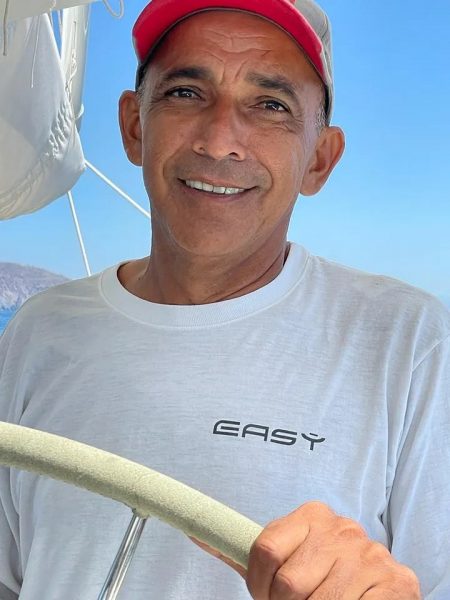
We can only imagine how it must have felt, having to leave the boat to return to the US with the dinghy at large, somewhere in or near the waters of Mexico. This writer has experienced a missing dinghy after a shackle broke during the night. Fortunately it occurred in a man-made lake in the middle of a canal system, and the wayward dinghy had not drifted far.
Has anything like this happened to you? Share your missing-dinghy story in the comments below, or send us an email at [email protected].
Premier Charter Vacations from The Moorings
Enjoy unforgettable yacht vacations with The Moorings.
Sailagram: A Snapshot of February Sailing
As we sail into spring we have a whole new album of photos from February’s outstanding (and some not-so-great) sailing days. Take a look at the fun cruising and serious racing that took place, and everything in between!
Did you take photos of your sailing days? Don’t worry if you didn’t; there’s a whole new month ahead in which to capture those special, everyday moments. Send your photos to [email protected].
As Clipper Cove Remains Open to Boaters, the Treasure Island Toll Moves Full Steam Ahead
Last year, we heard the first murmurings of a Treasure Island toll of $5 to both enter and exit the island. Now set to take effect in 2025, the toll was met with no small degree of outrage, with opponents saying a levy at the gates of TI would reduce access to public shores, which have grown with the new development of housing in the middle of the Bay.
Policymakers have acknowledged the need for a slew of exemptions to be baked into the levy. “We’re assessing the TI toll and affordability program in response to public feedback and direction from our board,” a spokesperson for the San Francisco County Transportation Authority (SFCTA) told us this week. “We do not have a date scheduled for the next discussion about the toll,” the spokesperson added.
When we reported on the toll last April, one source said that there’d been little mention of the toll as it was proposed last year. “It’s really poorly thought through, and no one can say who benefits or who pays,” a government official closely involved in the initial phases of the development told us. That same official told us that the toll doesn’t have “the required votes to bring it before the Board of Supervisors. The transit agencies are about to fall off a fiscal cliff once federal pandemic money is gone.”
In September last year, staff at the Treasure Island Development Authority (TIDA) told us that they were still considering toll policies, the exact price of the levy, and hours it would be enforced. TIDA told us that the plan was moving ahead, and that a toll had always been part of the development of Treasure Island from a naval air station to a much-sought-after, 8,000-residence waterfront neighborhood.

There is still disagreement about the toll’s scope and whom it was originally meant to target. There’s also been some confusion at the government level. In 2021, the Bay Conservation and Development Commission wrote a letter to the SFCTA, saying that when developers applied for their permit in 2016, information about the toll as it was proposed “was not provided at the time the Commission approved [the permit].”
The government official who was involved in the initial stages at TI told us that the original toll was meant to be applied to new residents and new trips, not to existing activities. “This is what we all relied on: ‘Visitors to the Islands, high-occupancy vehicles, and Coast Guard-related vehicles would not be charged a congestion pricing fee,'” the source said, quoting the the Final Environmental Impact Report, or FEIR. (The SFCTA has said that people already living on TI will not have to pay the new toll — more on that in a bit.)
Bob Beck, the Director at TIDA, told us in an email this week that a toll was first discussed in 1996 in the base reuse plan. “Tolling would be required in conjunction with the development of the island,” Beck wrote us in an email, then quoted the reuse plan: “‘For residential development, a plan to limit auto usage on Treasure Island must be developed prior to granting entitlements for new development. Elements of the plan should include limits on parking measures such as road pricing/tolls for auto access to the island, and community design and land use planning.'”
Beck also said that when the Board of Supervisors approved the 2006 development plan for TI, they included “explicit direction that staff secure state legislation authorizing the assessment of tolls to/from the island. [The toll] is integral to the viability of the development of the island serving as both a means of discouraging automobile use and funding transportation services which provide essential alternatives to driving,” Beck wrote us, referring to ferry services, which the toll is meant to subsidize.
We asked Beck if the original intent of the toll was only to charge new residents on TI, and not visitors, but we did not hear back from him by press time.
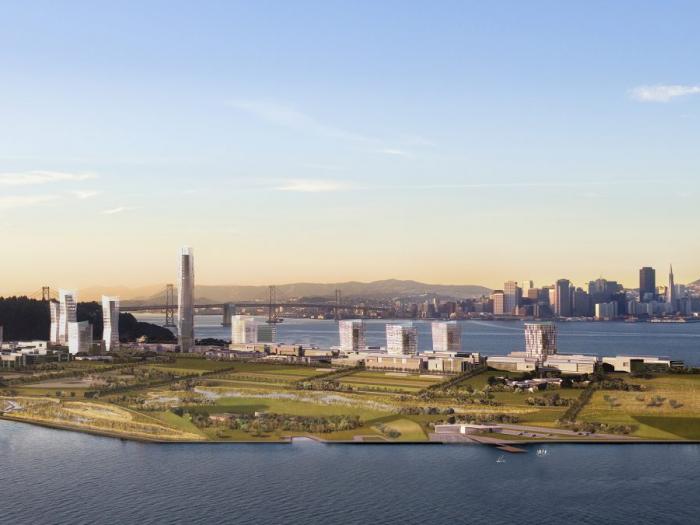
“If the toll is enforced,” we asked Beck, “isn’t it fair to say that a fee to enter TI effectively reduces access to the public waterfront?”
“The construction of the 290 acres of public open space and their future maintenance are possible through the development of new homes on the island,” Beck told us. “However, that development is only possible with robust public transportation programs and other measures. Rather than reducing access to the public spaces on Treasure Island, the tolling program is an essential component of a larger plan.”
Exemptions to the Toll Abound
In 2019, the San Francisco Board of Supervisors decided that existing Treasure Island residents will not pay the toll. “Residents will be able to drive on or off the island any number of times, at any time of day, and they will not pay the toll,” reads a SFCTA webpage outlining exemptions. The webpage defined peak hours as Monday through Friday, 6 to 10 a.m and 3 to 6 p.m.
There are a number of options being considered for toll rates, and further carving out exemptions for new, low-income residents:

These are the exemptions being considered for current businesses/workers, as copied and pasted from the SFCTA website:
- Applies to all existing not-for-profit entities and existing food distribution and food service establishments
- Employers are provided a quarterly subsidy based on number of employees
- Employers should prioritize compensation for low-income employees
- Remaining balance may be used to compensate deliveries, vendors, visitors, and/or customers
- Employers may use the subsidy to add to a toll tag (FasTrak) balance or as cash payment
- Program will be evaluated and adjusted after 12 months in consultation with eligible employer
Doug Paine, the executive director at the Treasure Island Sailing Center, was careful not to take sides regarding the toll, but said matter-of-factly: “Transportation is always a concern with respect to the inner-city youth we serve.”
Will parents who are dropping off and picking up their kids be discouraged by a toll?
The TISC Shuffle
On Wednesday, we mentioned that the good people at the Treasure Island Sailing Center have had to move their entire operation — including buildings — to accommodate the work being done to shore up TI against against liquefaction. Here’s a quick look at the extraordinary shuffle taking place at TISC. Hats off to the sailors who are keeping TISC’s doors open.
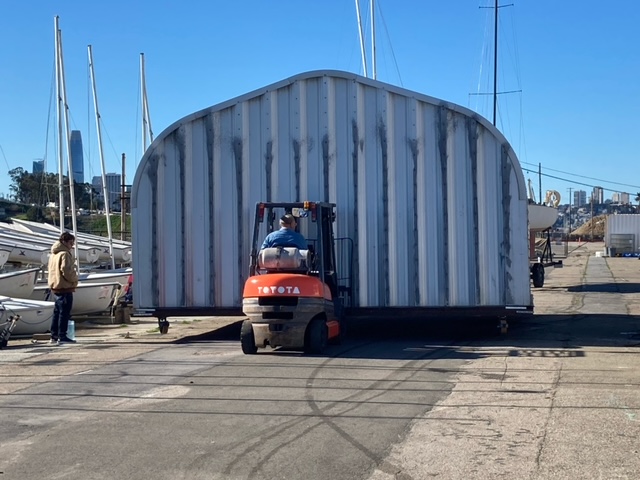
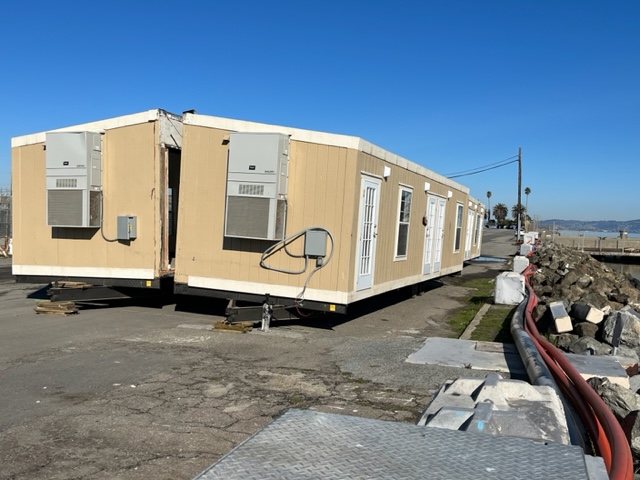
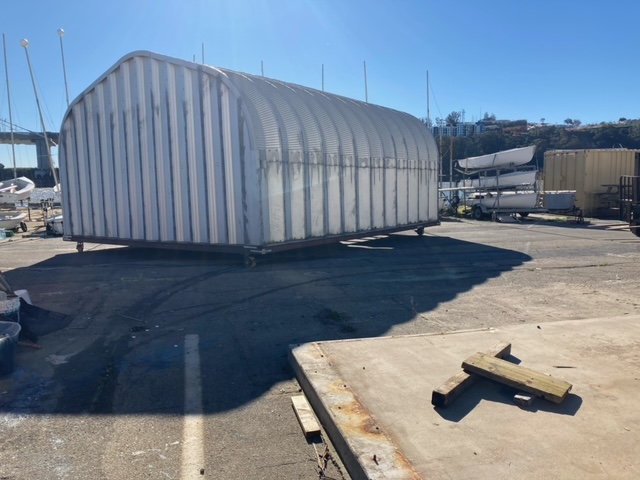
Where Will You Find the March Issue of ‘Latitude 38’ This Weekend?
Our delivery drivers were lucky this month when they delivered the March issue on a sunny Wednesday. Nice when it works out! We got this great photo of the head brewers, Joao Alameida and Tucker Bush, at Almanac Beer in Alameda, where we’ve been distributing Latitude 38s for a few years. The map below shows lots of great spots to pick up your March issue, but if you want one that comes with a cold Love Hazy IPA on a rainy Saturday, Almanac Beer would be a good choice.
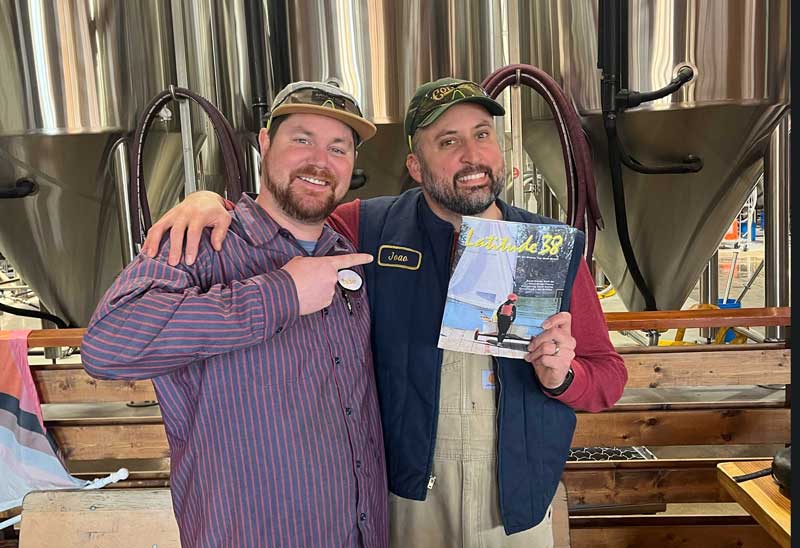
We also want to let you know we’ll have a couple of kegs of Almanac beer on hand for our Crew Party at Svendsen’s Spring Fling on Saturday, April 15, in Alameda. It’s a two-day event with the Crew Party starting at 4 p.m. on Saturday. We’ll have the April issues available if you haven’t already stopped by Almanac Beer to pick one up beforehand.
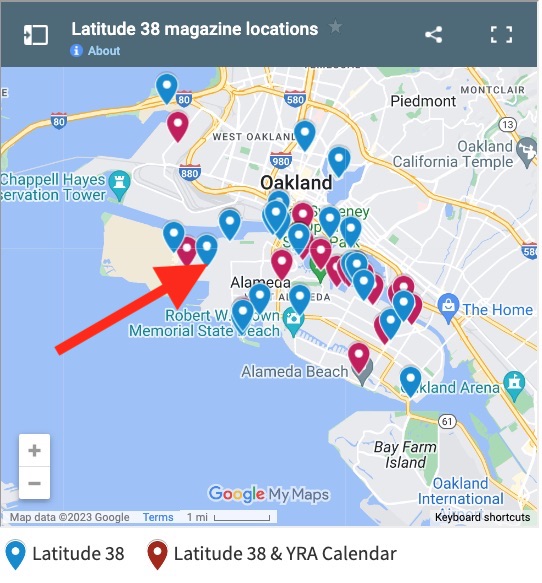
We appreciate Almanac Beer and all of our advertisers and distributors for helping us bring you the adventures of West Coast sailors every month.
Together We Sail Women’s Sailing Charter Experience
Embark on a luxury sail aboard our spacious 42′ Catamaran, as we celebrate a community of women on our first Passage Nautical International Women’s Month ‘Together We Sail’ experience. No sailing experience necessary. Enjoy our curated selection of complementary fine wines and appetizers, while getting acquainted with other inspiring women like you, and taking in the iconic sights, marine wildlife and breathtaking views that make San Francisco so unique. Contact Charter Director Mitch Perkins on 415-272-4130 for more info or reservations.

